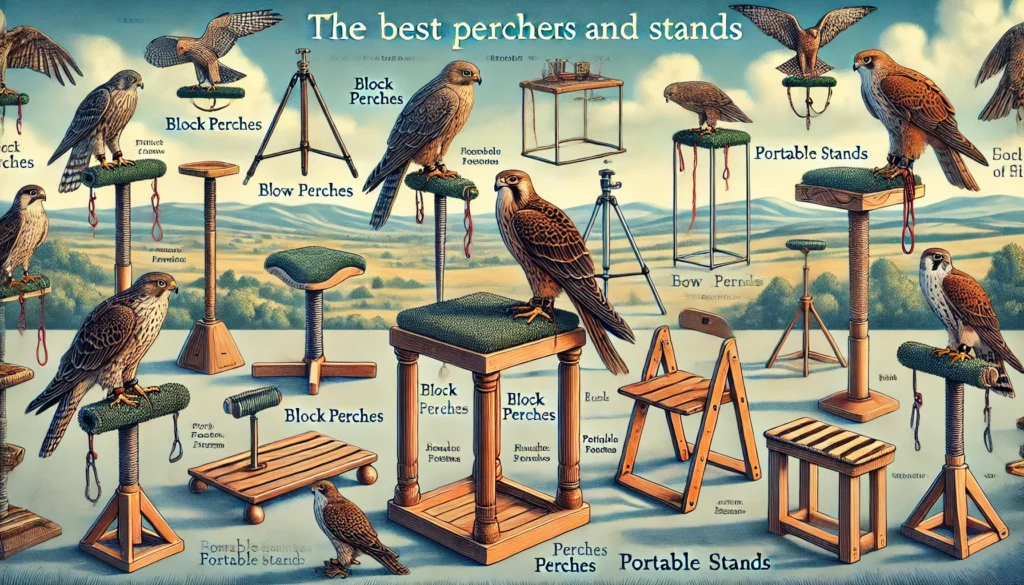Golden Eagles Facts for All Ages
- Golden eagles are powerful birds of prey known for their incredible hunting skills.
- They have a wingspan that can reach up to 7.5 feet, making them one of the largest eagles.
- These majestic birds are mostly found in North America, Europe, and parts of Asia.
- Golden eagles prefer open, mountainous regions for their habitats.
- They can dive at speeds of up to 200 miles per hour to catch their prey.
- Their diet mainly includes small mammals like rabbits and squirrels, but they can also hunt larger animals.
- Golden eagles are known for their impressive eyesight, which helps them spot prey from long distances.
- They are monogamous birds that often mate for life and return to the same nesting spots year after year.
- The nests, known as eyries, can be enormous and are often built on high cliffs or in tall trees.
- Conservation efforts are important to protect these magnificent birds and their natural habitats.
- Learn Falconry provides unique opportunities to observe and learn about golden eagles in a safe and engaging way.
Discover the Majesty of Golden Eagles: An Irish Tale of Wonder
Golden eagles aren’t just your average birds; they’re like the mythical creatures of Irish folklore, celebrated for their keen vision, incredible strength, and majestic flight. In this article, we’ll dive into their world, exploring where they live, how they hunt, and why they’re so important to our ecosystems.
Stay with us, for each paragraph will reveal a new layer of the golden eagle’s fascinating life. By the end, you’ll see why these regal birds are not just symbols of wilderness, but also key players in maintaining the balance of nature. It’s more than just a tale’it’s a story of survival, beauty, and the magic that unfolds right above our heads. So, are you ready to spread your wings and soar into the intriguing world of golden eagles with us? Let’s begin!
Golden Eagles: Majestic Birds of Prey in Falconry
Golden eagles are one of the most magnificent eagle species found around the world. Known for their impressive size, hunting skills, and soaring flight, these birds are highly regarded in the realm of falconry, especially under the practice of golden eagle falconry.
Golden eagles possess a wingspan that can exceed 7 feet, enabling them to glide effortlessly on air currents. They are easily recognizable by their golden-brown plumage, particularly on the nape of their necks, giving them a regal appearance.
The Habitat and Behavior of Golden Eagles
Golden eagles are adaptable birds, inhabiting regions from the northern hemisphere to alpine environments. They prefer open territories that allow them to spot and dive for their prey quickly. Known for their sharp talons and keen eyesight, these eagles are top predators, mainly hunting small mammals and birds.
Training Golden Eagles in Falconry
Golden eagle falconry is a revered skill that requires extensive training and specialized equipment. Aspiring falconers need to understand the intricacies of training a falcon and should be familiar with various falconry techniques used to accustom these majestic birds to human handlers. Utilizing the right falconry equipment, such as hoods, jesses, and leashes, is essential for protecting both the falconer and the eagle during training sessions.
For those new to falconry, starting with more common species might be advisable before progressing to golden eagles due to their strength and size. Potential falconers can learn a great deal by exploring our Beginner’s Guide to Falconry.
Health and Nutrition of Golden Eagles
Maintaining the health and nutrition of golden eagles is crucial. These birds require a balanced diet that mimics their wild intake, typically consisting of raw meat. Regular health check-ups and a care regimen are necessary to prevent common health issues and ensure their well-being. For more information on caring for falcons’ health, visit our detailed guide on Basic Falcon Nutrition.
Legal Aspects of Golden Eagle Falconry
Handling golden eagles in falconry comes with legal responsibilities. Falconers must adhere to laws and regulations designed to protect raptors and ensure their ethical treatment. This includes obtaining necessary permits, following conservation guidelines, and upholding animal welfare laws. More details on this can be found in our section on Falconry Licensing Requirements.
Golden eagle falconry not only honors a rich tradition but also plays a significant role in conservation efforts. By responsibly training and caring for these incredible raptors, falconers contribute to the preservation of this majestic species. Learn more about the historical and cultural significance of falconry through our comprehensive History of Falconry section.
Exploring the Golden Eagle – Kings of the Skies
Golden Eagles are magnificent creatures known for their impressive size, hunting prowess, and significance in history and culture. Let’s dive into some fascinating aspects of these incredible birds!
Training and Handling Golden Eagles
Training a Golden Eagle is not for beginners. These large birds require:
- Food Demand: A Golden Eagle needs a significant amount of food throughout the year.
- Careful Handling: Golden Eagles can be aggressive and must be handled with extreme care. Experience with large birds is crucial.
- Recommendation: To get an Eagle stamp, a recommendation from a master falconer is often necessary.
Training Specifics:
- Golden Eagles enjoy soaring for hours, which means training them takes more time.
- They do not hunt well with dogs, as they might mistake them for prey.
Necessary Equipment
Given their size, Golden Eagles require specially designed gear:
| Equipment | Description |
|---|---|
| Hood | A larger hood to cover their massive heads |
| Jesses | Thick straps to secure them during handling |
Availability and Habitat
Golden Eagles prefer wide, open spaces and are commonly found in:
- Western United States: States like Arizona, New Mexico, and Wyoming offer the open plains these birds utilize for hunting.
- Mongolia: Well-known for its vast landscapes, it’s a perfect environment for Golden Eagles.
| Location | Notable Features |
|---|---|
| Western USA | Wide, open spaces |
| Mongolia | Vast plains |
Conservation and Rehabilitation
Efforts to support Golden Eagles are vital:
- Falconry Fund: This fund helps rehabilitate Golden Eagles injured or orphaned due to human-related activities.
- Committee for Eagle Rehabilitation Excellence (CERE): Focuses on the needs of Golden Eagles in rehabilitation.
Festivals and Cultural Events
Golden Eagles hold a special place in culture, particularly in Mongolia:
- Golden Eagle Festival: Held in Mongolia, this festival features:
- Traditional games and eagle hunting contests
- Dates vary, with a significant event from September 5-8, 2024
- Cultural Significance: The festival showcases the deep bond between the eagle and its master, offering a unique cultural experience.
Legal Regulations
In places like Utah, government bodies regulate the capture and use of Golden Eagles in falconry:
- Division of Wildlife Resources: Manages the taking of Golden Eagles from the wild.
- Master Class Falconers: Can possess Golden Eagles under specific regulations.
Golden Eagles by the Numbers:
- Population in the USA: ~40,000 total, with ~31,800 in the interior western U.S.
| Statistic | Data |
|---|---|
| Total U.S. Population | ~40,000 |
| Interior Western U.S. | ~31,800 |
We hope this snapshot of Golden Eagles has sparked your interest in these extraordinary birds and their role in falconry and culture!
Final Thoughts on Golden Eagles in Falconry
Golden eagles are truly magnificent creatures with a rich history in falconry. Handling and training these majestic birds requires dedication and extensive experience, as they are larger and more aggressive compared to other birds of prey. Aspiring falconers need approval from a master falconer to obtain the necessary permits.
Golden eagle falconry equipment must be appropriately sized to match these powerful birds. Their natural habits make them best suited for wide, open areas found in places like the western United States and Mongolia.
Conservation organizations are working diligently to rehabilitate injured or orphaned golden eagles, ensuring their survival and well-being. Cultural events like the Golden Eagle Festival in Mongolia celebrate the deep bond between eagles and their handlers, providing a rare glimpse into this unique tradition.
In places like Utah, specific regulations govern the practice of falconry, aiming to protect both the raptors and their environments.
So, if you’re considering deepening your knowledge and passion for falconry with golden eagles, remember the commitment it entails. Whether you’re an experienced falconer or simply an admirer of these incredible birds, there’s always something fascinating to learn and appreciate about golden eagles in falconry.



